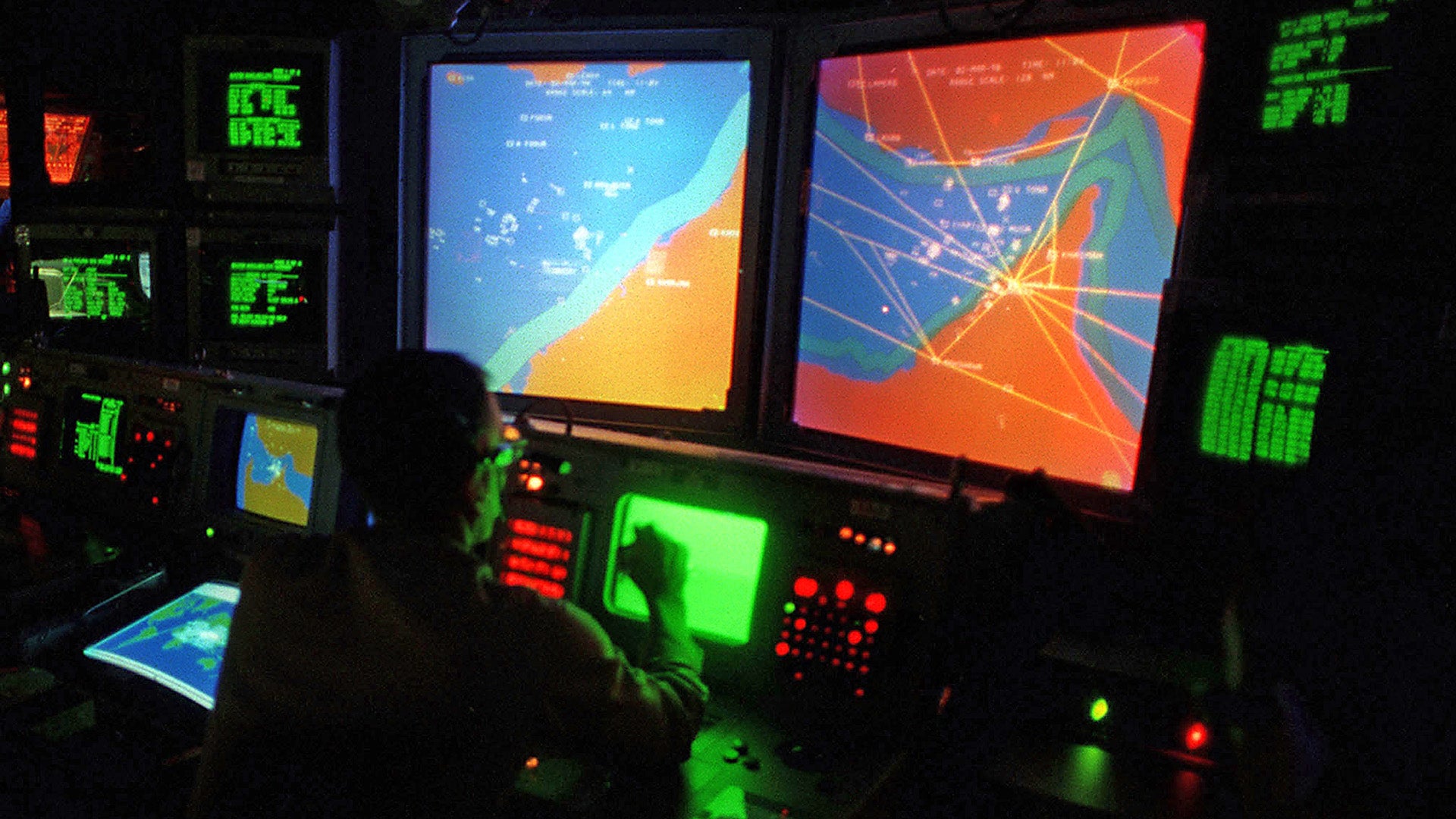A high profile and high stakes test of Raytheon’s new SM-3 Block IIA interceptor and the Aegis Combat System against an intermediate range ballistic missile failed last June. The misfire occurred not because a high-tech sensor broke down or the missile’s infrared hit-to-kill vehicle got confused, but because someone pushed the wrong button.
According to Defense News, the test’s failure occurred because a sailor in charge of tactical data links inside the Combat Information Center aboard the USS John Paul Jones—the Navy’s ballistic missile defense test ship—pressed a button that resulted in the command self-destruct of the experimental missile as it was hurtling towards its target. The button in question is used to designate incoming targets as hostile or friendly. The sailor supposedly pushed “friendly” by accident which resulted in a data-link transmission to the missile to end its intercept immediately. It did just that by blowing itself to smithereens.
At least we know the self destruct works, right?

The Navy won’t comment on the sailor’s supposed error, but has come out and said that neither the missile nor the Aegis Combat System aboard the ship were to blame for the test’s failure based on the data collected during the botched engagement and after-action reports by those involved. The investigation is still underway, so more details may surface that provide a better idea as to the circumstances surrounding the mistake.
At this moment the news is surely a relief to contractors involved with the test—primarily Raytheon who makes the SM-3 interceptors. It is also fairly good news for the US and Japan who are working together on the program, as the seemingly simple mistake may have been costly, but it is likely far less so than if the failure were attributed to a major systemic issue with the SM-3 Block IIA and its underlying technology.
The SM-3 Block IIA’s capabilities, which you can read all about here, could help partially satisfy the pressing need for bolstered ballistic missile defenses in the Pacific theatre. North Korea’s rapidly evolving missile prowess is turning a theoretical future threat into a tangible one today. General Joseph Dunford gave this frank assessment of the situation yesterday, although his claims that we can reliably defend against an attack at this time may be true on paper, but less so in reality.

The SM-3 Block IIA missile, once operational, could not only equip ballistic missile defense capable destroyers and cruisers from the navies of both Japan and the US, but it could also fill the vertical launch cells of Aegis Ashore installations that Japan is likely to begin constructing. Even the missile’s basic “rocket stack” design, which uses nearly all the edge-to-edge width of a Mark 41 vertical launch system (VLS) cell, could be used for other applications in the future, like prompt global strike or defending against high and very fast flying hypersonic threats.
The failed test in June was the fourth time a SM-3 Block IIA was test flown, and the first time it was fired from a ship. All other tests have been successful. We’ll now have to wait till the missile’s next test flight to see if it actually works in a semi-operational setting. But the truth is the technology is highly promising, especially among other ballistic missile defense concepts, and worth pursuing despite anything but the most critical of issues that may pop up during its development cycle.
Contact the author: Tyler@thedrive.com
